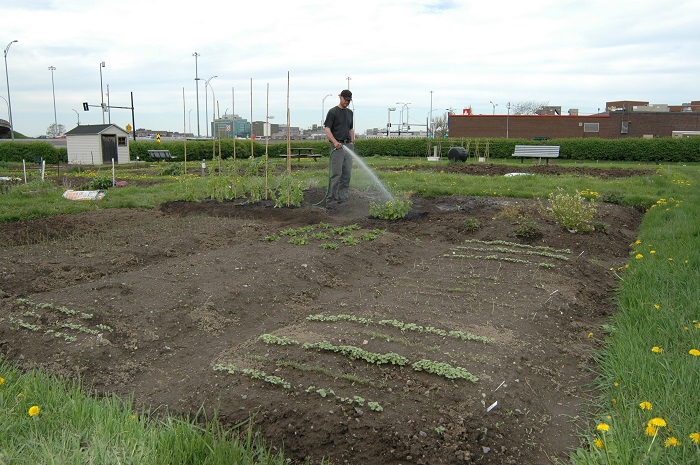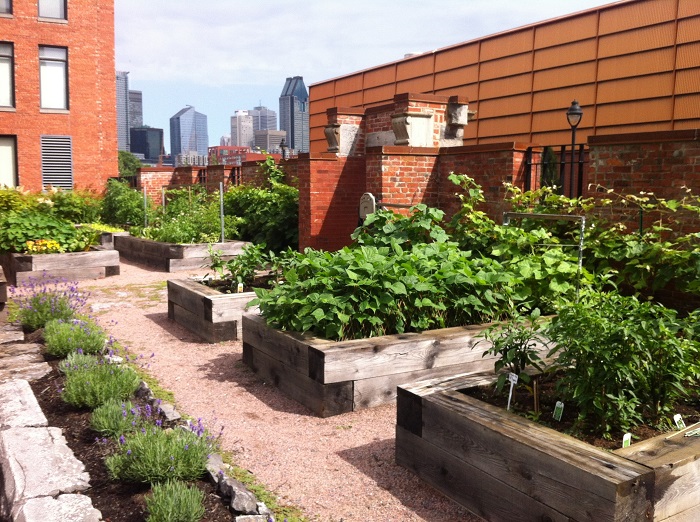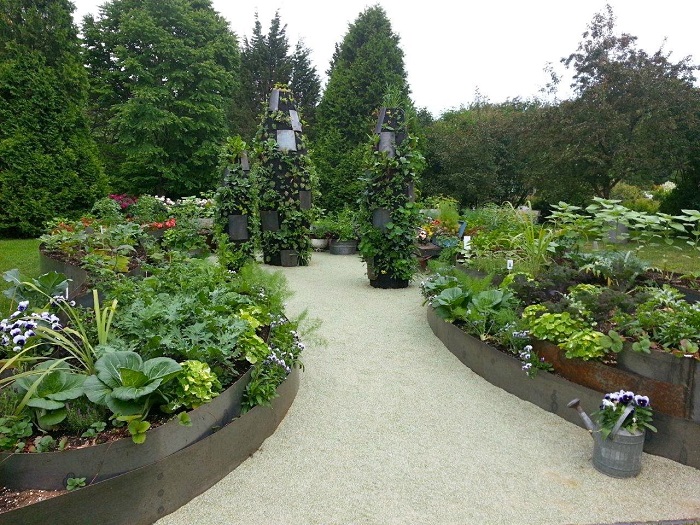Advice From a Pro: Creating Your Urban Veggie Garden, With Albert Mondor
Regarding its Urban Agriculture Policy, the Town of Mount Royal can count on the special collaboration of Albert Mondor, horticulturist, biologist and resident of TMR. His tips on gardening will help get Townie households on the right track in creating and maintaining their vegetable garden, throughout the summer.
Creating Your Urban Veggie Garden
By Albert Mondor, horticulturist and biologist
Given the current health and economic situation, many people are feeling the urge to reconnect with food and become more self-sufficient by growing their own vegetables.
If you plan on harvesting fresh vegetables this summer, you will need to prepare your garden’s soil before sowing or planting anything. Follow these steps to prepare your veggie garden and get ready for an abundance of delicious vegetables!
Tailor your Veggie Garden to your Needs
Vegetable crops should be grown in sunny spots away from the roots of mature trees. While some edible plants can grow in partially shaded areas, most vegetables require over six hours of sun.
Veggie gardens can come in many shapes. Most yards, however, are suited to a square or rectangular veggie garden.
An area of about 36 square metres (400 square feet) or 6 x 6 m (20 x 20 ft) should be enough to grow almost all the veggies a family of four needs from late spring to fall.
Mapping out your future veggie garden on paper or a computer is a great way to plan where to plant your vegetables and ensure you plant what you really need.
Remove Some Lawn
Obviously, you need to remove the grass covering the soil where your veggie garden will go. Pulling up dry lawn is tough, so it’s best to soak it thoroughly the day before. To easily remove grass sods, the grass roots should be cut approximately 2 cm (0.75 in.) from the base of the grass blades using a sharpened turf edger or spade.
However, if your new veggie garden is going to be quite large, you can also use a specially designed sod cutter available in most tool rental centres.
Create Wide and Deep Growing Beds
A veggie garden’s layout needs to be functional, with areas dedicated to growing plants and paths for gardeners to get around. The areas where vegetables grow are called growing beds.
For vegetable plants to root deeply and produce an optimal harvest, growing beds need to be wide, deep and raised. Regardless of their length, each bed should measure approximately 90 cm (3 ft.) wide so that you can easily reach the centre to weed, fertilize and harvest. The bed’s loose soil should be between 16 to 18 inches (40 to 45 cm) deep.
When digging a bed, the existing soil must be loosened using a spade or tiller—rent a model with blades behind the wheels in a tool rental centre—to a depth of 20 to 25 cm (8 to 10 in.) and then add about 15 cm (6 in.) of loose soil dug from between the beds. A 5-cm (2-in.) compost layer gives the bed a total depth of loose soil up to 45 cm (18 in.).
Finally, make sure that the aisles between the beds are narrow—no more than 30 cm (12 in.) wide to give the plants enough space—and cover them with geotextile fabric and a thick layer of mulch to keep the weeds down. You don’t need to mulch the beds.

Above : Wide, deep and raised beds allow vegetable plants to root deeply, improving their ability to draw water and nutrients, thus increasing vegetable production.
Add Compost
It is very rare that a property’s soil is so bad that it needs replacing. The amount of time, energy and money this takes is often not worth it. Even sandy or clay soils can quickly be transformed into quality soil suitable for growing most vegetable plants.
For healthy soil, you need to add compost to the existing soil. Compost is an outstanding product that benefits both soil and plants. Rich in humus, it lightens, loosens and aerates clay soils that are often heavy and compact, regulating their water retention in the process. In sandy soils, humus increases water and nutrient retention, slowing erosion and drainage.
If you don’t make your own compost, you can use commercial compost sold in bags. Spread approximately 5 cm (2 in.) of compost on top of each of your veggie garden’s beds, using approximately three 15-kg (33-lb.) bags of compost per square metre.
Finally, you need to incorporate compost and fertilizer into the soil with a spade or tiller. Once the compost is properly worked into the soil, the final level of each bed should exceed the aisle height by approximately 15–20 cm (6–8 in.). You can then use a rake to flatten the surface of each growing bed and lightly compress its gently sloped slides.
Try Growing in Raided Beds
If you’re not too keen on having to remove grass and turn over existing soil, you can create your garden in one or more raised beds. Most people use wood to build their raised veggie beds. You can also opt for a rot-proof material such as composite wood, stone or steel plates.
While wood is an extremely accessible and inexpensive material, it can rot quickly when on the ground. Choose a very strong wood such as oak, larch or thuya—commonly known as cedar—and make sure to cover the interior of the bed’s sides with extruded polystyrene or a thick geotextile membrane, ideally plasticized.
Avoid treated wood at all costs and use torrified wood instead as it is highly resistant to rot and won’t leach any toxic substances. You can even char the wood yourself with a welding torch. This ancient Japanese technique, called shou-sugi-ban, prevents soil micro-organisms from breaking down the wood.
To ensure that the wood is effectively protected by carbonization, planks must be burned at least three millimetres deep. If the wood is not burned deep enough, the protective carbon crust will disappear after only a few bouts of rain.
If you decide not to dig up the existing soil under your raised bed to fill it, then you can use commercial soil sold in bags, which contain equal parts compost, sphagnum peat and perlite. Some soils also contain a mycorrhizal fungus that attaches to the roots of plants and acts as an extension of the root system, drawing more water and nutrients.
When installing a raised bed on a paved or concrete surface or on contaminated soil, you need use a thick, permeable geotextile membrane to separate the soil to be used from the ground.

Above : Beautiful veggie garden in raised wooden beds.

Above : A raised veggie garden with steel walls will last many decades.
And there you go! Now you’re ready to plant!


